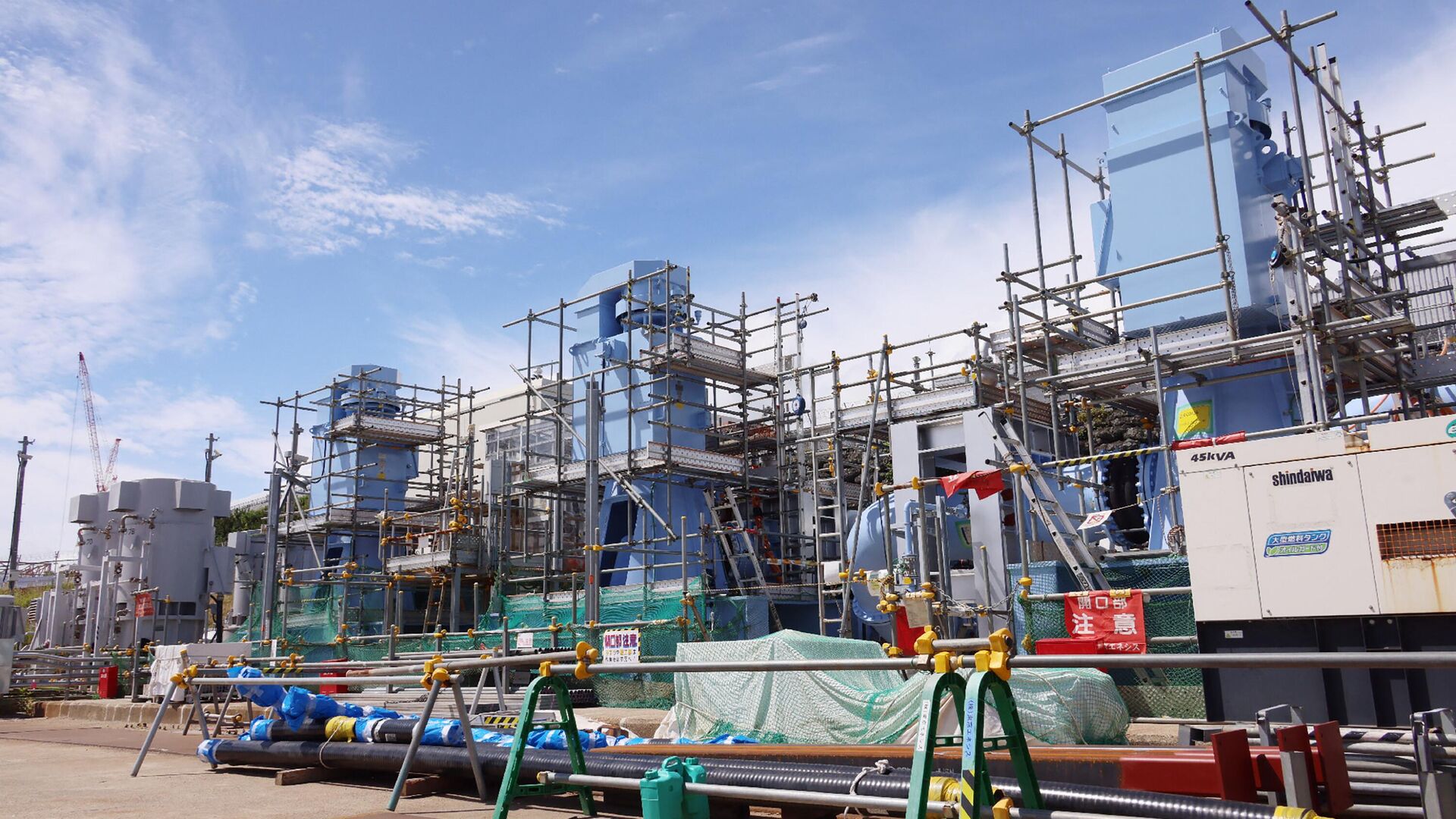https://en.sputniknews.africa/20231102/1063268958.html
Third Fukushima Treated Water Release Started in Japan
Third Fukushima Treated Water Release Started in Japan
Sputnik Africa
TOKYO (Sputnik) - The Fukushima nuclear power plant was severely damaged by the 2011 tsunami. Later the station stopped working. In August 2023, Japan began... 02.11.2023, Sputnik Africa
2023-11-02T10:36+0100
2023-11-02T10:36+0100
2023-11-02T18:30+0100
japan
international atomic energy agency (iaea)
international
china
tokyo
nuclear power plant (npp)
https://cdn1.img.sputniknews.africa/img/07e7/0b/02/1063269136_0:156:3000:1844_1920x0_80_0_0_16238e714d69ff4557230e1bbbad191d.jpg
The operator of Japan's Fukushima nuclear power plant, Tokyo Electric Power Company (TEPCO), has launched the third release of treated water, Japanese news agency Kyodo reported on Thursday.As part of the third treated water discharge, TEPCO plans to release around 460 metric tons of substance per day, which is around 7,800 cubic meters of water to be discharged at a distance of about 1 kilometer (0.6 mile) away from the coast by November 20, the news agency reported.The company's data shows that the concentration of tritium in the water to be discharged is 55-77 becquerels per liter, which is significantly less than the maximum allowed level of 1,500 becquerels per liter.To date, TEPCO has successfully completed two radioactive water releases. Meanwhile, the total number of discharges to be effected through March 2024 is four, with around 31,200 metric tons of water to be released in total.Japan started releasing part of the estimated 1.34 million metric tons of Fukushima water into the ocean on August 24 despite an outcry from neighboring countries and local fishermen. China has banned all seafood from Japan over concerns about radioactive contamination. The IAEA argues that treated wastewater will have a negligible radiological impact on the marine environment and human health.The Fukushima NPP suffered a meltdown after being hit by a massive tsunami triggered by a 9-magnitude earthquake in 2011. Since then, water has been continuously pumped in to cool the plant's reactors. As of June, around 1,000 tanks of treated wastewater were stored on site.
https://en.sputniknews.africa/20230427/1058887853.html
japan
china
tokyo
Sputnik Africa
feedback@sputniknews.com
+74956456601
MIA „Rossiya Segodnya“
2023
Sputnik Africa
feedback@sputniknews.com
+74956456601
MIA „Rossiya Segodnya“
News
en_EN
Sputnik Africa
feedback@sputniknews.com
+74956456601
MIA „Rossiya Segodnya“
Sputnik Africa
feedback@sputniknews.com
+74956456601
MIA „Rossiya Segodnya“
japan, international atomic energy agency (iaea), international, china, tokyo, nuclear power plant (npp)
japan, international atomic energy agency (iaea), international, china, tokyo, nuclear power plant (npp)
Third Fukushima Treated Water Release Started in Japan
10:36 02.11.2023 (Updated: 18:30 02.11.2023) TOKYO (Sputnik) - The Fukushima nuclear power plant was severely damaged by the 2011 tsunami. Later the station stopped working. In August 2023, Japan began releasing radioactive water in 4 stages.
The operator of Japan's Fukushima
nuclear power plant, Tokyo Electric Power Company (TEPCO), has launched the third release of treated water, Japanese news agency Kyodo reported on Thursday.
As part of the third treated water discharge, TEPCO plans to release around 460 metric tons of substance per day, which is around 7,800 cubic meters of water to be discharged at a distance of about 1 kilometer (0.6 mile) away from the coast by November 20, the news agency reported.
The company's data shows that the concentration of tritium in the water to be discharged is 55-77 becquerels per liter, which is significantly less than the maximum allowed level of 1,500 becquerels per liter.
To date, TEPCO has successfully completed two radioactive water releases. Meanwhile, the total number of discharges to be effected through March 2024 is four, with around 31,200 metric tons of water to be released in total.
Japan started releasing part of the estimated 1.34 million metric tons of Fukushima water into the ocean on August 24 despite an outcry from neighboring countries and local fishermen. China has banned all seafood from Japan over concerns about radioactive contamination. The IAEA argues that treated wastewater will have a negligible radiological impact on the marine environment and human health.
The Fukushima NPP suffered a meltdown after being hit by a massive tsunami triggered by a 9-magnitude earthquake in 2011. Since then, water has been continuously pumped in to cool the plant's reactors. As of June, around 1,000 tanks of treated wastewater were stored on site.


